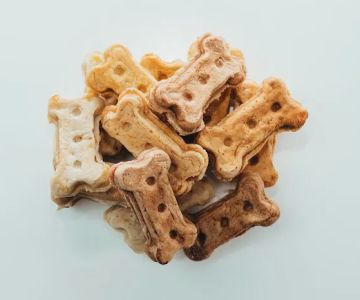How to Identify and Treat Pet Dehydration Effectively
Understanding and Treating Pet Dehydration: A Complete Guide
As a pet owner, one of the most important aspects of caring for your furry friend is ensuring their health and well-being. One of the most common yet often overlooked concerns is dehydration in pets. Dehydration can have serious consequences for your pet's health, but with the right knowledge and actions, you can prevent it or address it before it becomes a severe issue.
What is Pet Dehydration?
Dehydration occurs when a pet loses more fluids than they can take in, leading to an imbalance of electrolytes and other essential body functions. Just like humans, pets rely on water to maintain their bodily functions. Water is necessary for digestion, circulation, and even temperature regulation. Without it, pets can become sluggish, ill, or worse, experience organ failure. Unfortunately, dehydration can sneak up on you, especially in the early stages, so it’s important to recognize the signs and take immediate action.
Recognizing the Signs of Dehydration in Pets
The key to preventing severe dehydration is to catch it early. As pet owners, we need to stay vigilant and observe our pets for any signs of dehydration. These can vary depending on the pet’s age, breed, and overall health, but some of the most common symptoms to look out for include:
- Dry gums and nose: One of the first signs of dehydration is a dry mouth or gums. If you gently press your pet’s gums, they should return to their normal color within a second. If they stay pale or grayish, that’s a warning sign.
- Excessive panting or drooling: Dehydrated pets often pant excessively to try to cool off, or they may drool more than usual. This could be a sign that your pet is trying to compensate for the lack of water.
- Loss of skin elasticity: You can check your pet’s hydration by gently pinching the skin on their back. If the skin doesn’t quickly return to its normal position after being pinched, it may indicate dehydration.
- Reduced energy or lethargy: Dehydration can make your pet feel tired and sluggish. They might not engage in activities they usually enjoy, like playing or going for walks.
- Sunken eyes: When a pet is severely dehydrated, their eyes can appear sunken or hollow. This is often accompanied by a dull or glazed look in their eyes.
- Loss of appetite: Dehydration can make your pet lose their appetite. If your pet suddenly stops eating or drinking, it’s a cause for concern.
Causes of Dehydration in Pets
Dehydration in pets can result from several factors, and understanding the root cause is crucial for preventing future occurrences. Some of the most common causes include:
- Hot Weather: During hot summer months, pets can easily become dehydrated due to excessive heat. If your pet is outside for long periods without access to fresh water, dehydration can occur rapidly.
- Illness or Infection: Conditions such as vomiting, diarrhea, or fever can quickly dehydrate your pet. If your pet is sick and not drinking enough water, it’s important to monitor them closely for signs of dehydration.
- Lack of Water: Sometimes, the simplest reason for dehydration is that your pet isn’t drinking enough water. This could be due to a change in routine, an unappealing water bowl, or simply a lack of access to clean, fresh water.
- Exercise: Intense physical activity, especially in hot weather, can cause your pet to lose water more quickly. Without proper hydration before, during, and after exercise, your pet may become dehydrated.
How to Treat Dehydration in Pets
If you suspect that your pet is dehydrated, the first step is to act quickly. Depending on the severity of the dehydration, there are several ways to treat it. In mild cases, you may be able to help your pet hydrate at home, but for more severe cases, it’s best to seek immediate veterinary care.
1. Offer Fresh Water Regularly
The first and most obvious step in treating dehydration is to encourage your pet to drink fresh, clean water. Ensure that water is always accessible and change it frequently to keep it fresh. Some pets may prefer water that is a bit cooler or room temperature, so experiment to see what your pet likes best.
2. Provide Hydration Solutions
If your pet isn’t drinking water, you can offer an oral rehydration solution (ORS) specifically designed for pets. These solutions contain electrolytes and glucose that help replenish fluids and restore balance to the body. Consult your vet for recommendations on the best ORS for your pet.
3. Add Moisture to Food
If your pet refuses to drink water, try incorporating wet food into their diet. Wet food has higher moisture content and can help hydrate your pet while providing essential nutrients. You can also mix water or broth with dry food to increase moisture intake.
4. Use a Pet Water Fountain
Some pets are more likely to drink water if it’s flowing, so investing in a pet water fountain may help encourage them to drink more. The sound of running water often catches their attention and may prompt them to drink more frequently.
5. Seek Veterinary Care for Severe Dehydration
If your pet is severely dehydrated, it may require more than just oral hydration. In such cases, it’s crucial to take them to the vet as soon as possible. The veterinarian can administer fluids through an intravenous (IV) drip or subcutaneous injection to rehydrate your pet quickly. Severe dehydration is a medical emergency, so do not delay in seeking help.
Preventing Dehydration in Pets
While it’s important to know how to treat dehydration in pets, prevention is always better than cure. Here are some tips to keep your pet hydrated and healthy:
- Always provide fresh water: Make sure your pet always has access to fresh water, especially during the warmer months. Consider placing multiple water bowls around the house and outdoors for easy access.
- Limit exercise in the heat: Avoid exercising your pet during the hottest parts of the day. Instead, walk or play with your pet during the early morning or late evening when the weather is cooler.
- Feed wet food: Incorporating wet food into your pet’s diet will help them stay hydrated and provide additional moisture, especially if they’re not big drinkers.
- Monitor your pet’s health: If your pet is sick, monitor their hydration levels closely. Always consult with your veterinarian if your pet is showing signs of dehydration due to illness.
Dehydration can be a serious issue for pets, but with the right knowledge and preventive measures, you can ensure that your furry companion stays hydrated and healthy. Regular monitoring of your pet’s water intake and recognizing early signs of dehydration are essential steps in keeping them happy and well.
Contact Us
If you're concerned about your pet's hydration or need help with any other pet care questions, consider reaching out to us at Hidden Brook Veterinary. Our dedicated team is here to provide expert care and advice tailored to your pet's needs.
Related Articles

Dec 07, 2025

Dec 07, 2025

Dec 07, 2025

Dec 06, 2025

Dec 06, 2025

Dec 05, 2025

Dec 05, 2025

Dec 05, 2025

Dec 04, 2025
Subscribe to Our Newsletter
Get weekly pet care tips, vet-approved advice, and updates on nearby pet stores and clinics.


